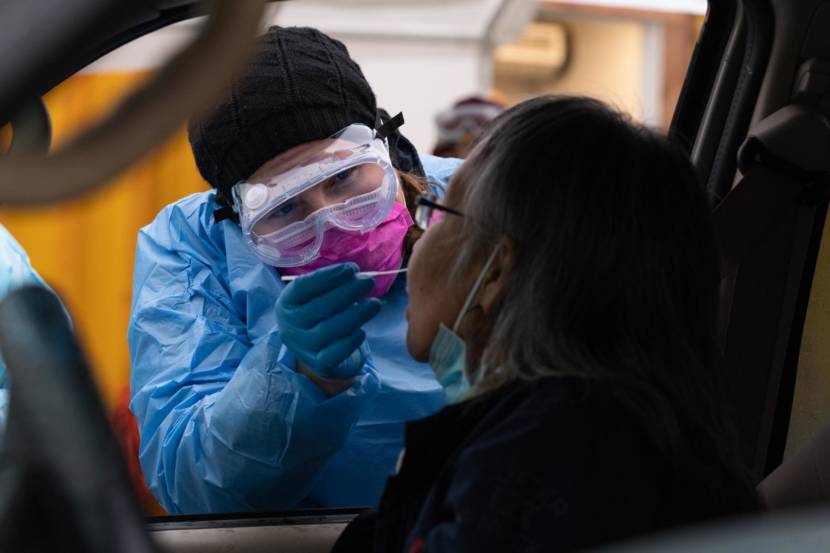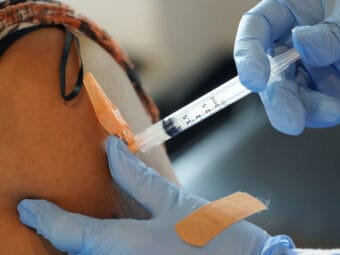
Omicron is now the dominant COVID variant in Alaska — and it is changing the way the health department looks at the pandemic. And, the state has new recommendations about how to gauge your risk.
The state’s public health officials say that the level of granular data we had at the beginning of the pandemic is pretty unusual. Now they will be tracking COVID-19 more like they have always tracked the flu — looking at trends over time.
As the state’s case counts reach an all-time high, Chief Medical Officer Dr. Anne Zink says the metrics public health is using to understand the virus’ spread and severity have changed.
One example is the percent positivity rate. That’s the percent of all of the tests for COVID-19 that come back positive. It used to be a good way to get a sense of the virus’ hold in a community. The higher the number, the more testing needed to be done.
But, that’s no longer the case.
“It really is changing in its usefulness,” Zink said. “If we have a lot of people doing at-home tests, we always struggle with some of the smaller facilities in getting reports in.”
Zink says it’s better to look at the total number of positive cases, which is still an indicator of risk and community spread. But state epidemiologist Louisa Castrodale says now we need to look at those numbers in broad strokes instead of worrying about daily counts.
“So whether we give you a number that is like, you know, 1,435 versus 1,537, like it’s up. That’s good; that’s what we want people to take away from it. Knowing that we have community spread, that’s sort of enough to help educate people into what they might want to do for mitigation,” Castrodale said.
Public health officials say contact tracing isn’t so useful anymore either and they’re phasing it out. The state hasn’t hammered out the full details, but they say they will be getting rid of some of their contact tracing staff.
“Way back when, it was super important to know exactly where that person had traveled and exactly where that person had been, because there were so few cases, and there really wasn’t community transmission,” Castrodale said.
In other words, contact tracing was useful in interrupting the spread of the disease. Now, Southeast Regional Public Health Nurse Manager Sarah Hargrave says omicron is moving too fast to catch every case before it spreads.
“When we have a huge number of cases, we really want to focus on those that are the newest, because they would have had less chance to spread it around to other people. The ones that are already 10 days out … they’ve spread it everywhere. As far as they’re going to, at any rate,” said Hargrave.
She says public health is “triaging” contact tracing. Instead of trying to reach everyone who’s positive, the state will first contact the newer positive cases and people who are at high risk or who live in group settings, like homeless shelters, mines and assisted living facilities.
Hargrave says public health needs to put its resources back on things like opioid addiction, tuberculosis and sexually transmitted diseases.
As the state changes how it tracks the pandemic in Alaska, local community leaders are having to change how they track it, too. Hargrave says they should be looking at case counts and vaccination rates as they make public health decisions.
State epidemiologist Joe McLaughlin says for people trying to make decisions about their personal level of risk, the most accurate metrics are the number of local hospitalizations and deaths. Case counts are still useful — even though they aren’t as accurate as they were before because the state isn’t getting data about all of the positive test results now.



